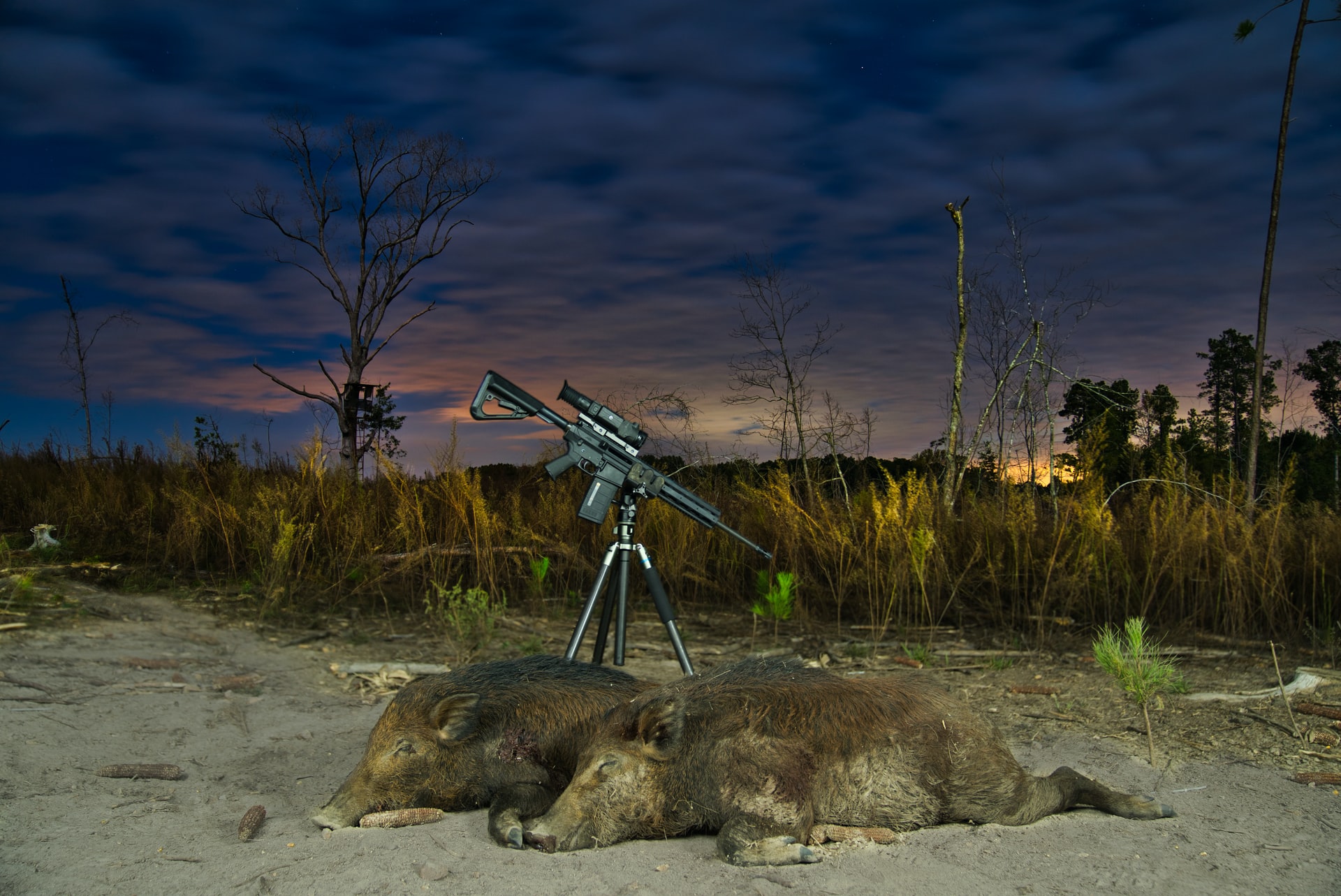Hunting is exciting during daylight hours and at night when many animals lead an active lifestyle, for example, a feral hog. The first problem is that a person cannot see at night without assistive devices. Next, let’s take a closer look at how to hunt in the dark and not be left without a trophy.
What Color Flashlight Is Best For Feral Hog Hunting?
When twilight falls, feral hogs begin to show activity, also at night and at dawn. In summer, wild boars can be seen before sunset, when they go out to feed. In winter, most often in the second half of winter, wild boars can be seen in the daytime. This is due to the difficult situation and difficult conditions associated with food and its search, which is why they are looking for food in the daylight. Hunters often prefer night hunting in combination with daytime because a hungry animal will seek food for itself. This is due to its nature. However, the main question that worries many: What Color Flashlight Is Best for feral hog Hunting? According to professional hunters, wild animals (particularly feral hogs) see perfectly any colored ray. But he is not always afraid: if a feral hog has not yet been shot with this color, he does not associate it with danger. If in his life experience, there is already a red or green under-barrel flashlight, then the animal will instinctively run away at the sight of this light.
The Science Behind Choosing a Red or Green Light for Night Hunting
Hunters use white, green, red, and blue flashlights all the time. They affect the retinas of animals in different ways at night. However, many beginners, and even experienced hunters, wonder why experts recommend using green light? Let’s take a closer look at the use of green light. The vision of wild animals is significantly different from that of humans. Many animals do not distinguish colors, but some still respond to them. For example, feral hog, elk, bear, wolf, fox do not react to light in the red and green. At the same time, professionals say that an animal already fired at the sight of light will notice the lighting. Of course, you should pay attention to the main advantages of green light. Wild animals practically do not react to green light. They not only do not see him, but they also feel safe. This light does not cause them aggression and does not frighten them. Green light retains its properties well in foggy weather, as it is weakly controlled by moisture. This is its main advantage among other colors. Green is considered comfortable for observation and shooting in absolute darkness. The hunter’s night vision is maximally preserved with green lighting, which allows him to remain vigilant in any situation. Beams of green light are used for hunting from an ambush since they are not visible from the side. Green helps illuminate objects at close range without drawing undue attention.
Essential Tips for Using Green Light
When using green light, professionals recommend avoiding shadow play. The light itself remains neutral for many wild animals, while any, by chance, a shadow that appears can interfere with your hunt. It is advised to direct the rays of light at the target at an angle while illuminating the animal to be in the field of view simply. Then your tactics will triumph. It is worth remembering that the green light must be directed at the target smoothly and not shine sharply at the beast in the face. Indeed, many practitioners write that although animals do not distinguish colors, they are susceptible to them. Since the green light filter is often used for hunting beavers, feral hogs, and moose, it is worth it because they still perceive light as dark reflections.
To summarize, we can conclude that the correct use of green light will increase the chances of returning from a hunt, not empty-handed.

Leave a Reply